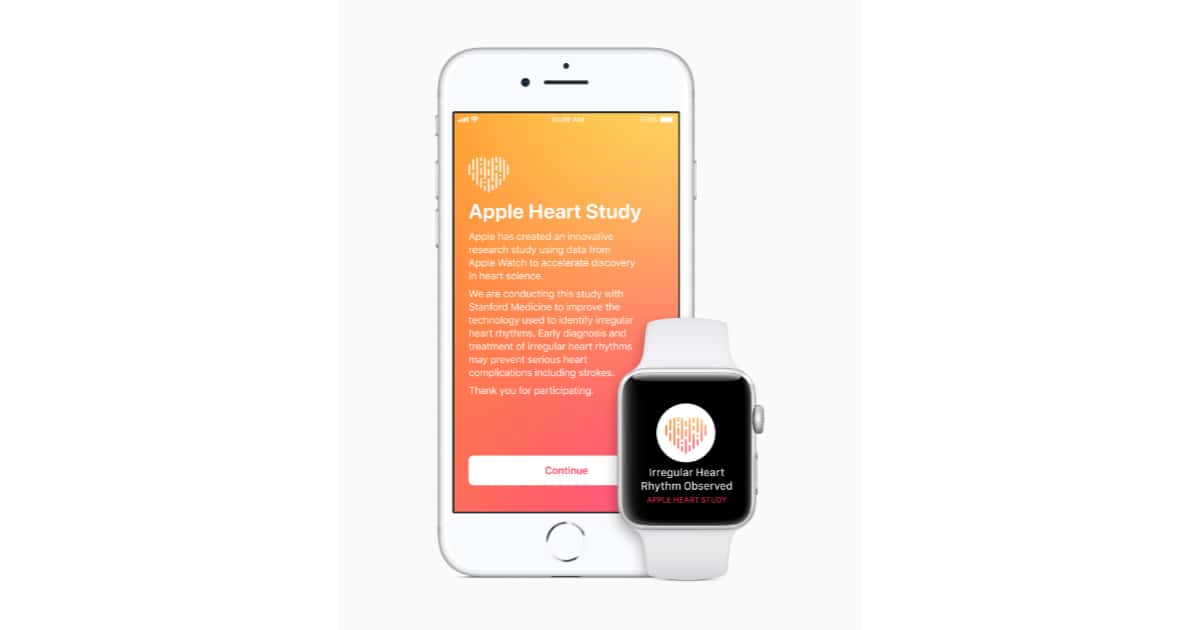Apple and Stanford launched their joint Apple Watch heart study program on Thursday. The program is collecting heart rate data to study irregular heart rhythms.

Apple said in a statement,
Apple today launched the Apple Heart Study app, a first-of-its-kind research study using Apple Watch’s heart rate sensor to collect data on irregular heart rhythms and notify users who may be experiencing atrial fibrillation (AFib). AFib, the leading cause of stroke, is responsible for approximately 130,000 deaths and 750,000 hospitalizations in the US every year. Many people don’t experience symptoms, so AFib often goes undiagnosed.
The study uses the Apple Watch heart rate sensors to collect data. If an irregular heart rhythm is identified participants get a notification on the watch and iPhone and are offered a free consultation with a doctor involved in the study, plus and electrocardiogram patch to collect additional data.
Apple and Stanford’s heart study is open to anyone 22 and older with access to the U.S. App Store. The app is a free download and requires an Apple Watch Series 1 or newer.
@diverreb:
Actually, the criteria for participation are quite broad, as they should be; merely age 22 and above and in possession of an AW Series 1 or above – and of course, a willingness to participate.
To be sure, there are other studies, including the one by UCSF via the Cardiogram app (the eHeart Study) that have similar objectives and use the AW.
The rationale for the study is quite simple and amply justified by decades of empirical data. AF affects approximately 2 – 3% of the European and N American population, and is triggered by any number of common conditions, including hypertension, coronary artery disease, history of rheumatic fever and follow on rheumatic heart disease, obesity, diabetes, congestive heart failure, cardiac valvular abnormalities, sleep apnea, genetic predisposition, and even acute conditions such as dehydration and diarrhoea. There are other associations beyond this that put a substantial fraction of the Western world at a measurable lifetime risk.
Two things. Many people who get AF don’t recognise that they have it, only that they really don’t feel well. Second, it can happen transiently, meaning that it may resolve without medical intervention, in which case the individual may never know that they had it.
Importantly, people who get AF can die. Quickly. Because the heart is beating rapidly, blood can pool in the left atrium and form a clot, called a thrombus. If all or part of that clot breaks off and gets pumped out of the left ventricle into the bloodstream, it will eventually lodge in a blood vessel (artery) that is too small to permit passage, forming an embolism and resulting in a stroke, with catastrophic or fatal result – it’s a calendar-clearing event.
For all of these reasons, it is an important disease to study, more so because, with a device like the AW, it is so easy to do, and because our knowledge about its prevalence in the population is limited. As the causes of AF are expanding, like obesity and diabetes, AF is likely on the rise, and may touch more people in the very near future than it currently does. Perhaps even you.
Better to get ahead of it. Enter, the AW and the Apple/Stanford study.
Pretty absurd study…. They want to study irregular heart patterns, like A Fib…. but you have A Fib or Flutter or are on meds associated with these irregularities they won’t let you in the study! Someone care to explain that?
Many thanks for this update, Jeff.
I’m delighted to see my medical school alma mater taking initiative with this device.
These are precisely the types of longitudinal studies that are the low-hanging fruit for the Apple Watch as designed, with no additional equipment required for generating hard data.
I suspect this is but a harbinger of things to come, including large clinical trials where the enrolled subjects need not be in the same location to provide important data. The possibilities with some enhanced sensors are game-changing.